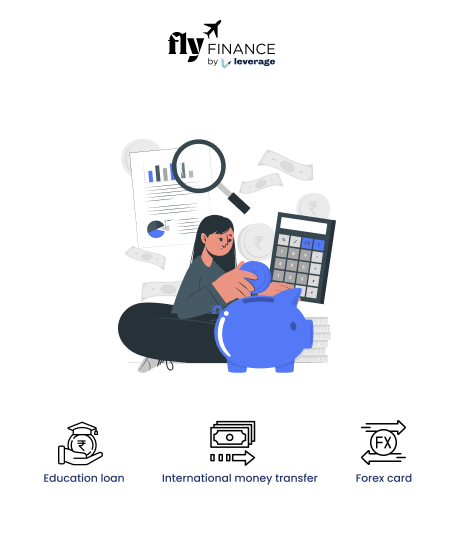If you’ve ever checked your Indian Bank account statement and noticed a small amount deducted under “bulk charges,” you might be wondering what bulk charges in Indian Bank are. These charges apply when you perform a large number of transactions in a specified period or exceed the transaction limits.
In this blog, we will break down everything you need to know about bulk charges in Indian Bank. From understanding what they are to how they can impact your transactions, this guide will help you stay informed and avoid unnecessary costs while banking.
Table of contents
What Are Bulk Charges in Indian Bank?
Bulk charges are fees that Indian Bank takes from your account when you do a lot of transactions or handle large amounts of money. These charges are common in many banks, and Indian Bank is no exception.
For example, if you withdraw cash from an ATM too many times in a month or deposit a big chunk of money, the bank might charge you a little extra.
Simply put- when you do something “in bulk”—like transferring a huge sum or making lots of transactions—Indian Bank adds a small fee.
Why Does Indian Bank Charge These Fees?
You might be thinking, “Why can’t everything be free?” Well, running a bank isn’t cheap! From keeping ATMs working to counting cash and sending it to the Reserve Bank of India (RBI), there are costs involved.
Bulk charges help the bank cover the cost of managing your account and processing your transactions. Here are a few common reasons you might see them:
- Too Many ATM Withdrawals: An Indian Bank usually allows a few free ATM withdrawals each month. But if you go beyond that limit—say, withdrawing cash five or six times—the bank may charge you. So, it is important to keep in mind the details related to Indian Bank cash withdrawal limits.
- Large Cash Deposits or Withdrawals: If you deposit or take out a big amount of cash, like money from a scholarship or part-time job, the bank might add a cash handling fee.
- SMS Alerts: Love getting updates about your account balance via text? If you’ve signed up for SMS alerts, Indian Bank might charge a small fee every few months (usually around INR 15 per quarter).
- Other Services: Things like using another bank’s ATM or making payments through a gateway (like booking tickets online) can also lead to bulk charges.
Also Read: Find the latest HDFC international debit card charges for 2025. Know ATM withdrawal fees, forex charges, annual fees, and tips to save money.
Types of Bulk Charges in Indian Bank
Understanding the different types of bulk charges in Indian Bank can help you manage your finances better and avoid unnecessary fees. Below are the main types of bulk charges you may encounter.
- Bulk Transaction Charges for Fund Transfers: If you’re sending money in bulk, such as paying for an event or making several payments at once, Indian Bank will charge a fee based on the volume of transactions. The charges could be per transaction or based on the total amount you’re transferring.
- Bulk Charges for Employer Payments: For students working part-time or on internships, their employers might use bulk payment systems to transfer salaries to multiple employees at once. These bulk charges typically apply to organizations processing large-scale payments like salary disbursements.
- Bulk Charges for Bill Payments: If you’re paying for utility bills, tuition fees, or other services on behalf of a group, you may encounter bulk charges. Indian Bank might impose these charges when you’re processing a series of payments in one go.
How to Avoid or Minimize Bulk Charges?
While bulk charges in Indian Bank are inevitable in some cases, there are ways to minimize or avoid them altogether. By being strategic with your transactions and understanding your bank’s fee structure, you can reduce the impact of these charges.
Here are some practical tips to help you manage your bulk payments more efficiently.
1. Check Your Bank’s Fee Structure: Indian Bank and other banks may offer different fee structures. Be sure to understand your bank’s terms to avoid unexpected bulk charges.
2. Make Transactions in Smaller Batches: If possible, break down large transactions into smaller, individual transfers. This can help you avoid triggering bulk charges, especially if you’re dealing with a large sum of money.
3. Use Online Banking and Mobile Apps: Many banks, including Indian Bank, offer discounts or fee waivers for students making transactions online. This can help reduce the impact of bulk charges.
4. Negotiate with Your Bank: If you’re consistently making bulk payments, consider speaking to your bank. They may offer discounts or waive fees for frequent transactions, especially for student accounts.
However, if you wish to close your Indian bank account from abroad or during your stay within the country, you can check the steps in the detailed guide.
Bulk Charges in Other Indian Banks
It’s important to note that bulk charges in Indian Bank are not unique to just this bank. Other banks in India also apply similar charges, although the rates and structures might vary.
Most banks have policies regarding bulk payments or transfers and impose fees based on the number of transactions.
Each bank has a different approach to charging fees for bulk transactions, so it’s crucial to understand your bank’s specific policies to avoid unexpected charges.
The table focuses on common bulk charge categories like cash handling, ATM transactions, SMS services, and cheque-related fees.
| Bank Name | Cash Handling Charges (Bulk Deposits/Withdrawals) | ATM Transaction Charges (Beyond Free Limit) | SMS Charges | Chequebook Charges (Beyond Free Limit) |
| State Bank of India (SBI) | INR 50 per transaction for deposits/withdrawals beyond 3 free cash transactions monthly (varies by balance) | INR 20 per withdrawal (other bank ATMs, >3 transactions); INR 10 (SBI ATMs, >5 transactions) | INR 15 per quarter (if balance ≤ INR 25,000) | INR 3-5 per leaf (after 10 free leaves/year) |
| Indian Bank | Charges apply for large cash transactions exceeding set limits (e.g., INR 150 annually for high volumes) | INR 20 per withdrawal (other bank ATMs, >3 metro/>5 non-metro); free at Indian Bank ATMs up to 5 | INR 15 per quarter for active SMS use | INR 5 per leaf (after 50 free leaves/year) |
| HDFC Bank | INR 5 per INR 1,000 or INR 150 min. (beyond 4 free transactions or INR 2 lakh daily limit at home branch) | INR 20 per withdrawal (other bank ATMs, >4 transactions) | INR 15-25 per quarter (varies by account) | INR 75 for 25 leaves (after first free book) |
| ICICI Bank | INR 5 per INR 1,000 or INR 150 min. (beyond 4 free transactions at home branch; INR 50,000 limit for third-party) | INR 20 per withdrawal (other bank ATMs, >4 transactions) | INR 15 per quarter (varies by account) | INR 4 per leaf (after 20-25 free leaves) |
| Axis Bank | INR 2.50 per INR 1,000 or INR 95 min. (beyond 5 free transactions or INR 50,000 daily limit) | INR 20 per withdrawal (other bank ATMs, >5 transactions) | INR 15 per quarter (varies by account) | INR 75 for 25 leaves (after first free book) |
| Bank of Baroda | Charges for deposits/withdrawals exceeding free limit (e.g., INR 1 per INR 1,000 for bulk cash) | INR 20 per withdrawal (other bank ATMs, >5 transactions) | INR 15 per quarter (optional SMS service) | INR 5 per leaf (after 30 free leaves/year) |
| Punjab National Bank (PNB) | INR 50-100 for cash handling beyond free limit (varies by account type and volume) | INR 20 per withdrawal (other bank ATMs, >5 transactions) | INR 15 per quarter (varies by account) | INR 5 per leaf (after 20 free leaves/year) |
| Central Bank of India | INR 1 per INR 1,000 for bulk deposits (beyond free threshold) | INR 20 per withdrawal (other bank ATMs, >5 transactions) | INR 15 per quarter (optional service) | INR 3-5 per leaf (after 20 free leaves) |
Key Notes:
- Cash Handling Charges: Applied when customers deposit or withdraw large amounts of cash exceeding the bank’s free transaction threshold. These fees cover operational costs like counting and remittance to the Reserve Bank of India (RBI).
- ATM Charges: Most banks offer a set number of free transactions (typically 3-5) at other bank ATMs and unlimited or higher limits at their own ATMs, with charges applied beyond these limits.
- SMS Charges: Levied quarterly for transaction alerts, though some banks waive this for higher-balance accounts or digital-only useINR
- Cheque Book Charges: Free cheque leaves are provided annually (e.g., 10-50 leaves), with additional leaves charged per unit.
- Variability: Charges may differ based on account type (savings, current, salary), minimum balance maintenance, and location. GST is typically added to these fees.
Please Note: For the most accurate and up-to-date information, refer to the specific bank’s service charge documentation.
Also Read: Learn about the Federal Bank debit card international transaction charges, markup fees, Dynamic Currency Conversion fees, and more.
How to Check for Bulk Charges?
You can always check your Indian Bank bulk charges by reviewing your bank statement. Any bulk transaction fees should be listed in the transaction details.
Additionally, you can log into your bank’s mobile app or website to check the charges associated with your recent payments.
To sum up, understanding bulk charges in Indian Bank is an important part of managing your finances, especially as a student.
Whether you’re transferring money for group activities or paying multiple bills at once, these charges can add up. By staying informed and planning your payments carefully, you can avoid unnecessary fees and make smarter financial decisions.
Always ensure you’re aware of your bank’s policies and take advantage of any student-specific benefits that may be available to you.
FAQs
Bulk charges in Indian Bank are fees applied when you make multiple transactions or payments in a single batch. These charges depend on the number of transactions and the amount being transferred.
The exact charges for bulk transactions vary depending on the nature of the payment and the amount involved. It’s best to check with your branch or review your bank’s fee structure for detailed information.
Yes, most Indian banks charge bulk transaction fees, though the exact rates and policies can vary. It’s advisable to check with your specific bank to understand their fee structure.
A bulk transaction refers to processing multiple payments or transfers at once. This could involve transferring money to multiple recipients or paying several bills in a single batch.
Indian Bank charges an annual maintenance fee (AMC) of Rs 177 for customers who hold a basic debit card. The AMC is Rs 150, and an 18% GST is added, amounting to Rs 27. So, Rs 150 + Rs 27 = Rs 177.
The minimum balance requirement in Indian Bank depends on the type of account. For a regular savings account, the minimum balance is typically INR 1,000, while a zero-balance account has no such requirement.
Indian Bank does not charge any maintenance fee for its ATMs. However, there may be charges for using ATMs outside their network.
You can avoid bulk charges by breaking down large transactions into smaller ones, using online banking services that may offer fee waivers, and checking your bank’s specific bulk charge policies.
The transaction limit varies based on the type of account and the method of transfer. For instance, IMPS allows transfers up to Rs 2 lakh, while RTGS and NEFT have higher limits for larger transactions.
To learn more about education loans, the best bank accounts for students, forex, banking experience for global students, or international money transfers, reach out to our experts at 1800572126 to help ease your experience with studying abroad.
Follow Us on Social Media





























